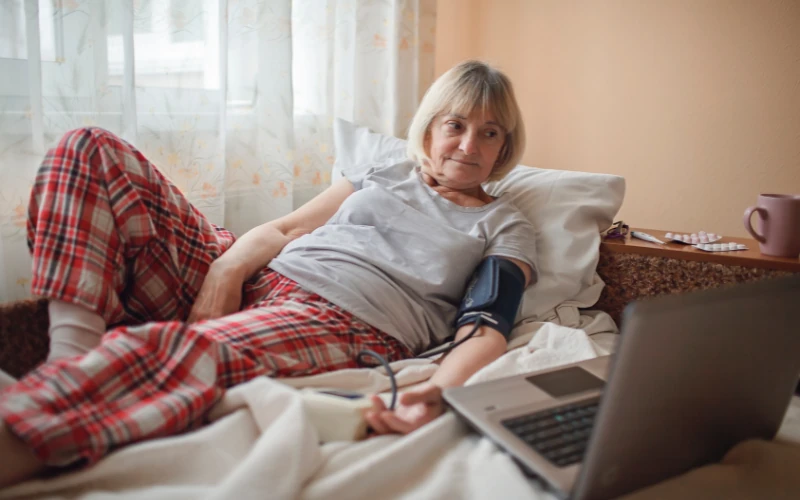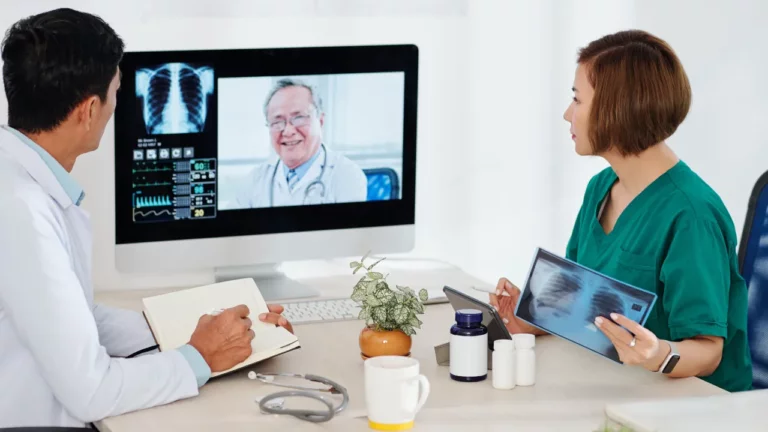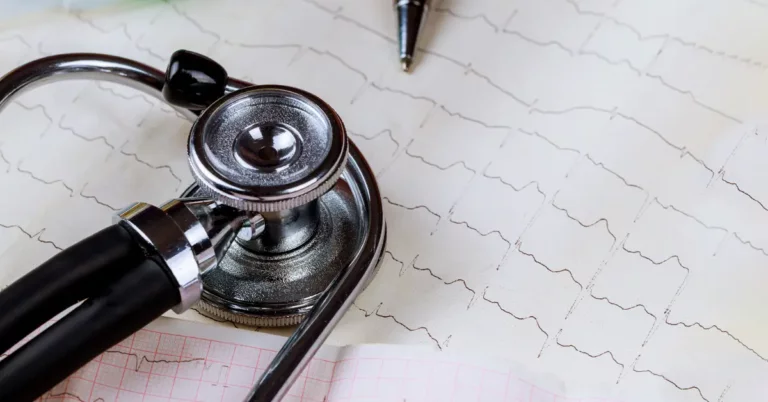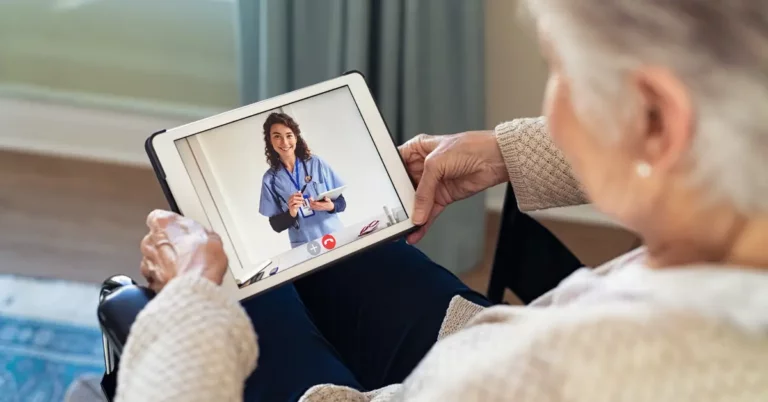Pulmonary Hypertension is a severe medical condition characterized by elevated blood pressure in the pulmonary arteries, affecting both heart and lung function. Left untreated, it can lead to heart failure, breathlessness, and other debilitating symptoms. Understanding the crucial role of self-management is essential for individuals with pulmonary hypertension, as it can help mitigate symptoms and prevent the progression of the disease. In this article, we delve into the significance of self-management strategies and the integration of remote patient monitoring (RPM) in improving outcomes for those living with pulmonary hypertension.
Understanding Pulmonary Hypertension Self-Care
Pulmonary hypertension self-care involves taking proactive measures to manage one’s condition and prevent it from worsening. This routine involves making lifestyle changes, scheduling regular check-ups with a doctor, taking prescribed medications, avoiding triggers, and seeking treatment for underlying conditions.
Additionally, self-management for pulmonary hypertension involves actively participating in one’s health and working with your doctor to create a personalized care plan. By taking care of yourself and following a comprehensive self-care plan, individuals with pulmonary hypertension can improve their health outcomes and maintain a high quality of life.
How to Reduce Pulmonary Hypertension with Self-Care
Regular Exercise
Regular exercise can play an important role in reducing symptoms of pulmonary hypertension and improving overall health. It is recommended that you consult your doctor to determine what type of exercise is best for you and how much is appropriate. Regular exercise can help improve blood flow and lessen symptoms, helping you feel better.
Healthy Diet
A well-balanced, nutritious diet can be crucial in managing pulmonary hypertension. This dietary plan can include consuming a variety of fruits, vegetables, lean meats, whole grains, and limiting your intake of salt, saturated fats, and added sugars. Following this diet can help improve overall health and lessen symptoms of pulmonary hypertension.
Avoid Triggers
Triggers such as stress and anxiety can worsen symptoms of pulmonary hypertension. To reduce symptoms, it is important to avoid or manage these triggers and maintain a healthy lifestyle.
Quit Smoking
Smoking is a major risk factor for pulmonary hypertension, and quitting can help reduce symptoms and avoid further complications. If you need help stopping smoking, talk to your doctor, who can assist you and provide support throughout the process.
Other Considerations
In addition to the above self-help measures, it is important to maintain a healthy weight, avoid sitting in a hot tub or living at high altitudes, and limit the consumption of foods high in vitamin K, such as canned goods. If you experience fainting or other symptoms, you must to speak to your doctor immediately. These measures can help lessen symptoms and improve overall health for individuals with pulmonary hypertension.
How to Prevent Pulmonary Hypertension with Self-Care
Early Detection and Treatment
Early detection and treatment of pulmonary hypertension are crucial to slowing the progression of the disease. Regular check-ups with your doctor and monitoring your oxygen levels with an oximeter at home can help diagnose and treat the condition. If your oxygen level drops below 90%, it is important to call or ask your doctor immediately.
Avoid Risk Factors
Avoiding known risk factors, such as smoking, obesity, and high altitudes, can help prevent the development of pulmonary hypertension.
Medication Management
Taking medications as prescribed, including drugs like bosentan, can help manage and prevent pulmonary hypertension. It’s important to follow your doctor’s instructions and take the right medication dosage to slow the progression of the disease.
Treating Underlying Conditions
Treating underlying conditions, such as heart disease and sleep apnea, can help prevent the development of pulmonary hypertension. If you have any symptoms or concerns, speak to your licensed medical professional for a proper diagnosis and treatment plan.
Enrollment in Remote Patient Monitoring Program
RPM programs can also assist pulmonary hypertension self-care. Remote monitoring allows healthcare providers to monitor patients’ vital signs and symptoms remotely, allowing for early detection of changes that may indicate a worsening of the condition. This program can help healthcare providers intervene early and prevent the progression of pulmonary hypertension and improve self-care.
In summary, self-management plays a critical role in managing and preventing pulmonary hypertension. Following these tips can help you feel better and reduce the risk of further complications. If you experience any symptoms, such as fainting or even death, it’s important to call your doctor immediately.
Exploring the Role of Remote Patient Monitoring in Pulmonary Hypertension Self-care
Remote patient monitoring (RPM) plays a crucial role in the self-care of pulmonary hypertension. RPM facilitates continuous tracking of vital signs and symptoms, enabling early detection of potential complications and timely intervention, ultimately leading to better management and improved outcomes for patients with pulmonary hypertension.
- Enhanced monitoring: RPM offers real-time tracking of vital signs and symptoms, empowering patients and healthcare providers to proactively manage pulmonary hypertension and adjust treatment plans accordingly.
- Personalized care: RPM facilitates personalized care plans tailored to each patient’s unique needs, optimizing treatment adherence and improving overall outcomes in pulmonary hypertension management.
- Improved communication: RPM fosters seamless communication between patients and healthcare providers, allowing for timely interventions and ongoing support in navigating the challenges of living with pulmonary hypertension.
- Empowering patients: The role of RPM empowers patients to take an active role in their own care, promoting self-management and enhancing quality of life while living with pulmonary hypertension.

Frequently Asked Questions
What is pulmonary hypertension?
Pulmonary hypertension is a condition characterized by high blood pressure in the pulmonary arteries, which supply blood from the heart to the lungs. This increased pressure can strain the heart and lead to serious complications if left untreated.
What are the symptoms of pulmonary hypertension?
Symptoms of pulmonary hypertension may include shortness of breath, fatigue, chest pain, dizziness, and swelling in the ankles and legs. These symptoms can vary in severity and may worsen over time.
How is pulmonary hypertension diagnosed?
Diagnosis typically involves a combination of medical history review, physical examination, imaging tests (such as echocardiogram and CT scan), and specialized cardiac tests (such as right heart catheterization) to measure pulmonary artery pressure.
What are some self-care strategies for managing pulmonary hypertension?
Self-care strategies for pulmonary hypertension may include regular exercise, a healthy diet low in sodium, quitting smoking, avoiding high altitudes, managing stress, and staying compliant with prescribed medications.
Can remote patient monitoring (RPM) help in managing pulmonary hypertension?
Yes, remote patient monitoring (RPM) can play a significant role in managing pulmonary hypertension by allowing healthcare providers to remotely monitor patients’ vital signs and adjust treatment plans as needed. This proactive approach can help prevent complications and improve overall outcomes.
What are the potential complications of untreated pulmonary hypertension?
Untreated pulmonary hypertension can lead to serious complications such as heart failure, arrhythmias (irregular heartbeats), blood clots in the lungs (pulmonary embolism), and ultimately, right-sided heart failure, which can be life-threatening. Early diagnosis and proper management are crucial in preventing these complications.
The Importance of DrKumo Remote Patient Monitoring in Pulmonary Hypertension Self-care
DrKumo offers a technology solution for RPM that utilizes a state-of-the-art, mobile-enabled, continuous real-time monitoring engine and AI/ML technology to provide a user-friendly approach to healthcare.
With DrKumo RPM, patients’ conditions can be continuously monitored, providing real-time data to healthcare providers for quick and effective interventions and adjustments to treatment plans. This solution leads to improved health outcomes, reduced hospitalization rates, and a better quality of life for patients.
In the context of pulmonary hypertension self-management, DrKumo RPM plays a significant role by monitoring blood pressure levels and enabling healthcare providers to make necessary adjustments to treatment plans. As a result, it helps lessen symptoms and avoid adverse outcomes.
Real-time monitoring and timely intervention provided by DrKumo’s RPM solution are key to effectively managing pulmonary hypertension. The ability to track and respond to changes in blood pressure in real time enables healthcare providers to take proactive steps in managing the condition and slowing its progression.
Takeaways
To effectively manage pulmonary hypertension, it’s important to adopt healthy habits, have regular check-ups with your doctor, and treat underlying conditions. Self care such as regular exercise, a healthy diet, avoiding triggers, taking medications as prescribed, and monitoring and avoiding risk factors can all play a role in reducing symptoms and preventing complications. Furthermore, work closely with your doctor to maximize the benefits and consider incorporating RPM technology into your self-help plan.
Don’t let pulmonary hypertension control your life. Take control of your health with the help of pulmonary hypertension self-care and DrKumo RPM. Contact us today to learn more.
Disclaimer: This article is intended for educational purposes only and should not be taken as a substitute for professional medical advice, diagnosis, or treatment related to Pulmonary Hypertension. Always seek the advice of a qualified healthcare provider with any questions you may have regarding Pulmonary Hypertension or any other medical condition.








